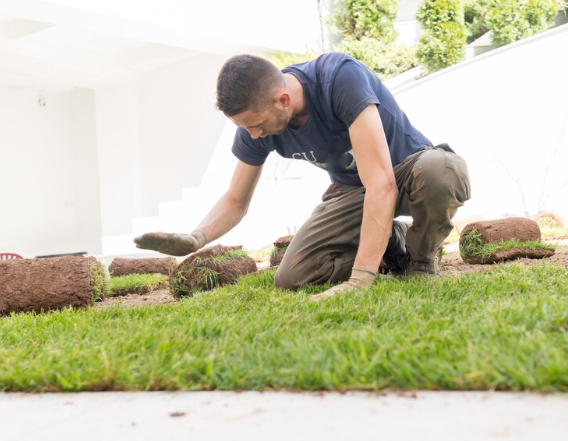Providing Discount Landscape
How an Artificial Turf Is Installed Over the Concrete?

Artificial turf has become increasingly popular for various outdoor spaces, including patios, playgrounds, and even rooftop gardens. One of the advantages of artificial turf is that it can be installed over concrete surfaces, transforming a dull and uninviting area into a lush and vibrant oasis.
However, the process of artificial turf installation over concrete requires careful preparation and execution to ensure a seamless and long-lasting result. We have tried to simplify the process into a few easy steps for you.
Step-by-Step Guide for Artificial Turf Installation
Preparing the Concrete Surface
Before the artificial turf installation can begin, the concrete surface must be properly prepared. First, it is essential to ensure that the concrete is clean and free of debris and that any existing coatings or sealants are removed.
Next, any cracks or uneven areas in the concrete should be repaired using a suitable concrete patching compound. By doing this, you can make sure that the artificial turf will lay uniformly and that the surface is smooth and doesn’t have any trip hazards.
Installing the Base Layer
Once the concrete surface is prepared, the next step in the artificial turf installation process is to install a base layer. This layer serves as a cushion between the concrete and the turf, providing shock absorption and drainage. Typically, a combination of crushed stone or gravel and a weed barrier fabric is used for the base layer.
The crushed stone or gravel is spread over the concrete surface to a depth of 2-4 inches, depending on the desired cushioning and drainage requirements.
Laying the Artificial Turf
The artificial turf installation can start once the base layer is in place. The turf is rolled out over the base layer, ensuring that it is properly aligned and free of wrinkles or bunching. Depending on the size of the area, multiple rolls of turf may need to be joined together using specialized seaming techniques.
Once the turf is in position, it is secured to the concrete surface along the perimeter using either nails or a specialized adhesive. It is essential to prevent the turf from shifting or lifting over time.
Infilling and Grooming
After the artificial turf installation, the next step is to infill the turf with a specialized material, such as silica sand or rubber crumb. The infill material is spread evenly over the turf and worked into the fibers using a power broom or rake. This process helps to weigh down the turf, provide a natural-looking appearance, and improve its overall performance.
Finally, the artificial turf is groomed using a specialized turf groomer or power brush. This step helps to stand the turf fibers upright, creating a lush and realistic appearance.
Maintenance and Aftercare
While artificial turf installation over concrete requires a significant upfront investment, it offers low maintenance and long-lasting durability. Regular cleaning and grooming are recommended to maintain the turf’s appearance and performance.
By following the proper artificial turf installation process over concrete, you can transform an otherwise lifeless space into a stunning and functional outdoor area that can be enjoyed for years to come.
